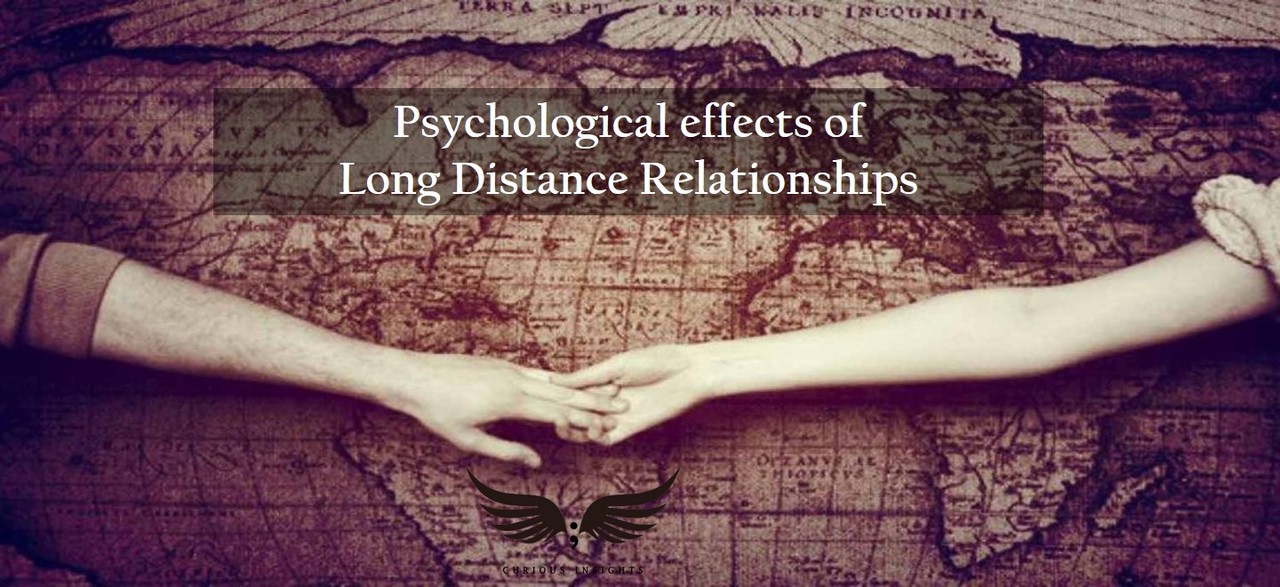Why Long Distance Relationships Fail: 13 Brutal Truths

Long-distance relationships often fail due to lack of physical connection and communication challenges. The absence of regular face-to-face interaction makes it difficult to build and maintain intimacy, trust, and emotional connection.
Moreover, the strain of being apart can lead to feelings of loneliness and insecurity. The following insights delve into the complexities and difficulties that can arise in long-distance relationships, shedding light on why they often struggle to withstand the test of time and distance.
The Lure Of Proximity
When it comes to relationships, physical presence plays a crucial role in bonding. Being able to touch, hold hands, and feel the warmth of your partner’s embrace creates an intimate connection that is difficult to replicate in a long-distance relationship. The lure of proximity is undeniable, as it allows couples to engage in everyday activities together, share experiences, and build a deeper level of emotional intimacy.
Physical Presence In Bonding
Physical presence is a powerful tool for creating a strong bond between partners. It enables couples to communicate not only through words but also through touch and body language. The ability to hold hands, cuddle, and share physical affection fosters a sense of security, comfort, and emotional closeness.
Moreover, physical presence allows couples to engage in shared activities and create memories together. Whether it’s cooking a meal, going for a walk, or simply watching a movie, these shared experiences strengthen the connection and create a sense of togetherness.
Challenges Of Physical Separation
However, in a long-distance relationship, physical separation poses significant challenges. The inability to be physically present with your partner on a regular basis can lead to feelings of loneliness, frustration, and longing. The lack of physical touch and intimacy can create a void that is difficult to fill, no matter how many video calls or text messages are exchanged.
Additionally, the absence of physical presence can make it harder to navigate conflicts and misunderstandings. Non-verbal cues, such as facial expressions and body language, play a crucial role in effective communication. Without these cues, it can be challenging to fully understand your partner’s emotions and intentions, leading to misinterpretation and potential conflict.
Moreover, the practical aspects of physical separation, such as different time zones, travel expenses, and limited opportunities for face-to-face interaction, can put a strain on the relationship. The constant juggling of schedules and the anticipation of reunions can be emotionally exhausting and may lead to feelings of frustration and resentment.
| Hard Truths |
|---|
| 1. Physical presence fosters emotional closeness and intimacy. |
| 2. Long-distance relationships lack the benefits of physical touch and shared activities. |
| 3. Physical separation can lead to feelings of loneliness and frustration. |
| 4. Non-verbal cues are essential for effective communication and conflict resolution. |
| 5. Practical challenges, such as different time zones and travel expenses, can strain the relationship. |
In conclusion, while the lure of proximity is strong, long-distance relationships face inherent challenges due to the absence of physical presence. The lack of physical touch, shared activities, and non-verbal communication can make it difficult to maintain emotional closeness and navigate conflicts effectively. Understanding these hard truths is crucial for individuals considering or currently in a long-distance relationship.

Credit: www.wikihow.com
Communication Breakdown
Communication breakdown is one of the most challenging aspects of long-distance relationships. The inability to be physically present often leads to misunderstandings, frustration, and emotional distance.
Frequency Vs. Quality
In long-distance relationships, the emphasis on frequent communication can sometimes overshadow the importance of quality conversations. Frequent messaging or calling may create an illusion of connection while lacking depth.
It’s crucial to prioritize meaningful conversations that allow for emotional connection and understanding, rather than simply aiming for high communication frequency.
Technological Constraints
Long-distance relationships are heavily reliant on technology for communication. Technological issues such as poor internet connection, time zone differences, and communication apps malfunctioning can hinder effective interaction.
These constraints can lead to frustration and can impede the ability to maintain a strong emotional connection.
Trust Issues Magnified
Insecurity And Jealousy
Distance breeds insecurity and jealousy in long-distance relationships.
Without physical presence, doubts and fears escalate rapidly.
The Struggle For Reassurance
Constant need for reassurance becomes a burden in LDRs.
Verifying trust through screens is an endless battle.

Credit: www.linkedin.com
Financial Strain
Financial strain can exacerbate the challenges of long-distance relationships, leading to increased stress and communication barriers. The pressure to maintain the relationship while dealing with money issues can often strain the bond between partners.
Financial Strain is one of the biggest obstacles for long-distance relationships. While emotional connection is essential, it cannot be ignored that long-distance relationships can be expensive. From the costs of maintaining communication to budgeting for visits, distance can take a toll on your wallet. Here are some hard truths about the financial strain of long-distance relationships:Costs Of Maintaining Connection
Maintaining a long-distance relationship means investing in communication tools like phone calls, text messages, and video chats. These tools can be expensive, especially if you are communicating across different time zones. It’s important to consider the cost of these tools, and choose affordable options that work for both partners. One way to cut down on expenses is by using messaging apps like WhatsApp and Viber that offer free communication.Budgeting For Visits
Another challenge of long-distance relationships is budgeting for visits. Visits can be expensive, especially if you are travelling long distances. The cost of transportation, accommodation, and meals can add up quickly. To avoid financial strain, it’s important to plan visits in advance and set a realistic budget. This can help you save money and make the most of your time together. You can also consider alternative options like meeting halfway or taking turns visiting each other. In conclusion, financial strain is one of the many challenges of long-distance relationships. It’s important to be mindful of the costs of maintaining connection and budgeting for visits. By planning ahead and being financially responsible, you can make your long-distance relationship work.Differing Life Trajectories
Long distance relationships are challenging and often don’t work due to a variety of reasons. The differing life trajectories of two individuals can lead to a breakdown in communication, feelings of loneliness, and a lack of physical intimacy. Ultimately, it takes a great deal of effort and commitment from both parties to make a long distance relationship successful.
Career Paths
When it comes to long distance relationships, differing career paths can create a significant obstacle. One partner may have to travel frequently or work long hours, making it difficult to find time for communication and visits. Moreover, career growth may require moving to a different city or even country, which can put a strain on the relationship. In such cases, it is essential to have an open and honest conversation about the future and how the relationship fits into each partner’s career goals.Relocation
Relocation is another issue that can make long distance relationships challenging. One partner may have to move to pursue a new job opportunity, attend graduate school, or take care of a family member. However, if the other partner cannot move for various reasons, such as a stable job or family commitments, it can create a significant distance between them. In such cases, it is crucial to evaluate whether the relationship can withstand the physical separation or whether it is time to consider other options.Evolving Personal Goals
Personal goals and aspirations can change over time, which can create a mismatch in long distance relationships. One partner may want to settle down and start a family, while the other may prioritize career advancement or travel. These differences can cause tension and resentment, as one partner may feel like they are sacrificing their goals for the relationship. Therefore, it is essential to have regular conversations about individual aspirations and how they align with the relationship’s future. In conclusion, differing life trajectories can be a significant challenge in long distance relationships. Career paths, relocation, and evolving personal goals can all create a mismatch that puts a strain on the relationship. It is crucial to have honest and open communication about the future and how the relationship fits into each partner’s goals. Ultimately, both partners must be willing to make compromises and sacrifices to make the relationship work.Social Circles And External Influences
Social circles and external influences play a crucial role in the success of long-distance relationships.
Friends And Family Opinions
The opinions of friends and family can heavily impact a long-distance relationship.
Feeling Left Out
Feeling left out due to social activities can strain a long-distance relationship.
Emotional Disconnect
Long distance relationships often fail due to emotional disconnect. Without physical intimacy and regular communication, it’s easy to feel isolated and disconnected from your partner, leading to a lack of trust and ultimately, the breakdown of the relationship.
Lack Of Shared Experiences
In a long-distance relationship, the lack of shared experiences can create an emotional disconnect between partners. When couples are physically apart, they miss out on everyday activities that bring them closer together. Simple things like going on a date, cooking together, or even just spending quality time in each other’s company become nearly impossible. These shared experiences play a crucial role in building emotional connections and deepening the bond between partners. Without them, it becomes challenging to maintain the same level of intimacy and understanding.Struggling With Intimacy
Intimacy is a vital aspect of any relationship, and long-distance relationships often struggle to maintain it. Physical proximity allows for spontaneous moments of affection, such as holding hands, hugging, or kissing, which are important for fostering emotional connections. In a long-distance relationship, physical intimacy is limited to video calls or text messages. While technology can bridge the gap to some extent, it cannot fully replace the warmth and physical presence of a partner. This struggle with intimacy can lead to feelings of loneliness, frustration, and ultimately, an emotional disconnect between partners. In conclusion, the emotional disconnect in long-distance relationships arises from the lack of shared experiences and the struggles with intimacy. These challenges can make it difficult for partners to maintain the same level of emotional connection and understanding that is essential for a healthy relationship. While some couples may find ways to overcome these obstacles, it is important to acknowledge the hard truths and realities that long-distance relationships often face.The Complications Of Reuniting
Discover the harsh reality of why long-distance relationships often fail, facing 13 undeniable truths. Distance creates challenges that strain communication and trust, leading to inevitable complications in reuniting.
Idealization Vs. Reality
When it comes to long distance relationships, one of the biggest challenges couples face is the idealization of their partner versus the reality of being together. In a long distance relationship, it’s easy to create an idealized version of your partner in your mind. You miss them, you long for their presence, and you start to imagine that being together will be perfect.
However, when the time comes to reunite, the reality can be quite different. The person you’ve been missing might have habits or quirks that you weren’t aware of, or there may be compatibility issues that only become apparent when you’re in close proximity. It’s important to remember that no one is perfect, and being prepared for the reality of your partner can help manage the complications that may arise when reuniting.
Adjusting To Proximity
Adjusting to being in close proximity after a long period of separation can be challenging. You might have developed your own routines and ways of doing things while apart, and suddenly having to merge those with your partner’s can cause friction. It’s important to communicate openly and honestly about your expectations and needs, and be willing to compromise and find a balance that works for both of you.
Additionally, spending extended periods of time together can reveal new aspects of your partner’s personality that you weren’t aware of before. This can be both exciting and challenging. It’s important to approach these discoveries with an open mind and a willingness to accept and embrace the changes.
Furthermore, adjusting to proximity also involves navigating the practical aspects of being together. This could include sharing living spaces, managing finances, and making joint decisions. These tasks may seem trivial, but they can be a source of conflict if not addressed and managed effectively.
In conclusion, reuniting in a long distance relationship can be complicated. The idealized version of your partner may not match the reality, and adjusting to proximity can bring about new challenges. However, with open communication, understanding, and a willingness to adapt, these complications can be overcome. It’s important to approach the reunion with realistic expectations and a commitment to working through any issues that may arise.

Credit: www.linkedin.com
Frequently Asked Questions
Can Long Distance Relationships Work?
Yes, long distance relationships can work with strong communication, trust, and commitment from both partners. Setting goals and planning visits can help maintain the connection despite the physical distance.
What Are The Challenges Of Long Distance Relationships?
Challenges of long distance relationships include lack of physical intimacy, communication barriers, and feelings of loneliness. It requires extra effort to maintain trust and emotional connection when partners are apart.
How To Make A Long Distance Relationship Last?
To make a long distance relationship last, prioritize effective communication, trust, and understanding. Planning regular visits, setting goals, and being honest about emotions can strengthen the bond between partners despite the distance.
Conclusion
Long-distance relationships face challenges that can strain even the strongest bond. Communication, trust, and commitment are crucial. While love is powerful, physical presence is equally important. Understanding these hard truths can help navigate the complexities of long-distance love. Ultimately, it’s essential to be realistic and proactive in maintaining the relationship.

I am Sara Ali Khan, a Bollywood Actress & Writer, and SEO expert. With 10+ years of experience in these fields, I am passionate about creating high-quality content that not only engages and informs readers but also ranks well on search engines.



